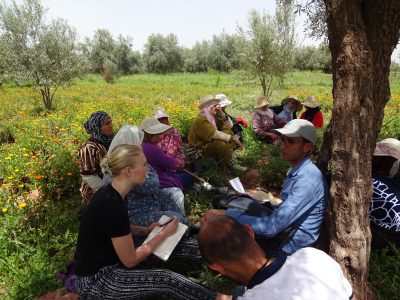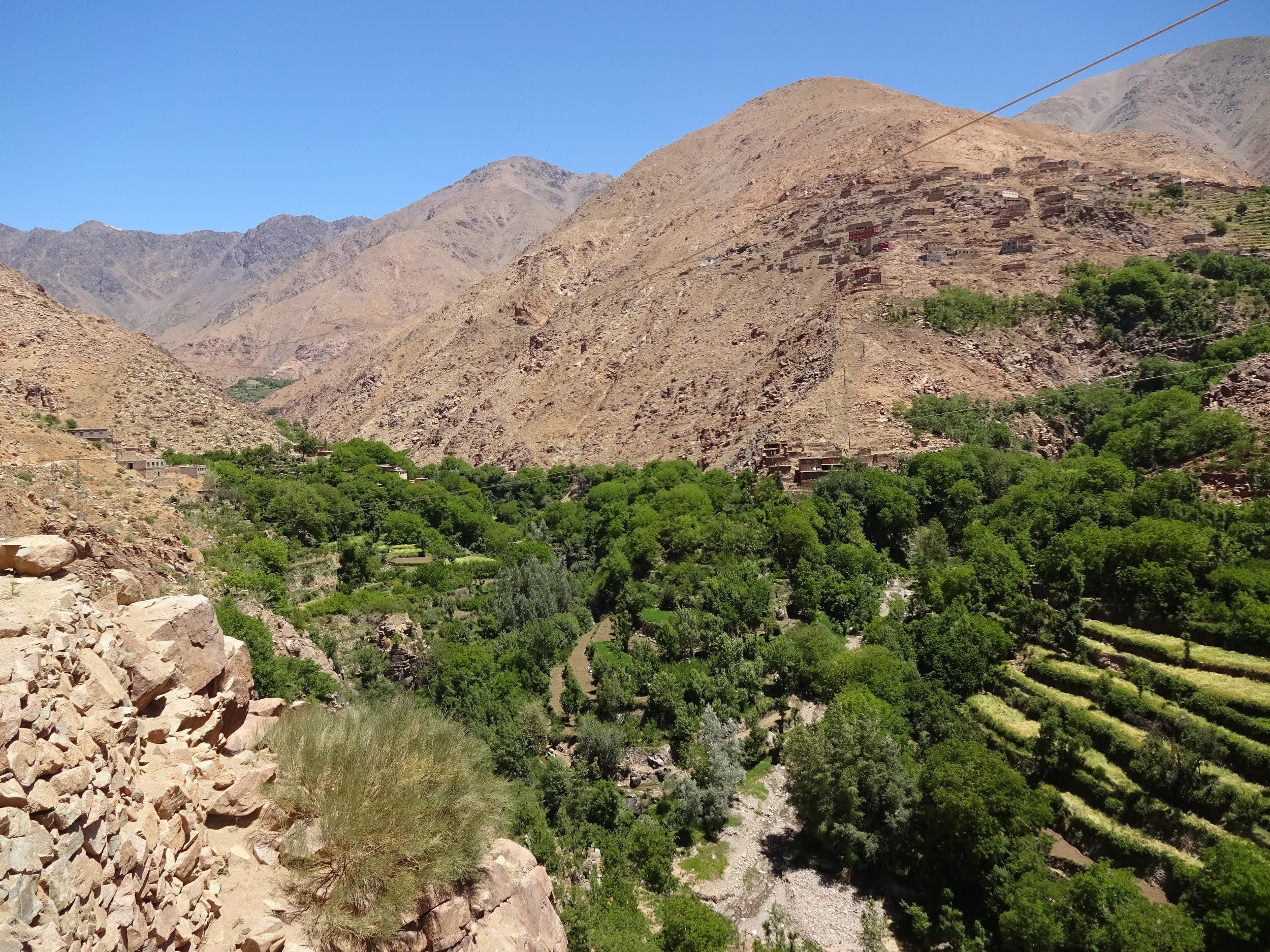Effective Practices to Sustain Development in Morocco

Natural landscapes are declining worldwide. Approximately 30 percent of the world’s natural forests are expected to be lost by the end of this century. Further, 25 percent of all land on earth is currently under threat of desertification, resulting in severe soil erosion and falls in productivity, food security, and biodiversity. Morocco is no exception. Over 90 percent of Morocco’s historical forest cover has already been decimated due to the combined effect of overexploitation, overgrazing, and worsening climate. The disastrous extent of Morocco’s environmental degradation poses a major threat to the country’s flora and fauna. According to the IUCN Red List, over 223 plant and animal species in Morocco are endangered. In addition, severe erosion, water run-off, floods, and soil depletion are critical concerns for human well-being, particularly in the Atlas communities who depend on natural resources and are marginalized with most experiencing systemic poverty.
Under these highly stressful conditions, conservation inherently remains a development issue and their combined mitigation has become an important political objective. As a result, a wide range of projects that provide communities with control over their natural resources and promote socioeconomic benefits were established. However, tackling environmental and societal issues at once can be challenging and many projects have failed to achieve both their conservation and development goals. Identifying a set of effective practices and sharing lessons learned is therefore crucial to successfully conserve natural landscapes and alleviate poverty.
To enable an understanding of effective practices, a Moroccan pro-poor agroforestry program was assessed using a new methodology that allowed the analysis of the linkage between conservation management, community interventions, and their influence on both development outcomes and biodiversity improvements. The evaluation of this program implemented by the High Atlas Foundation (HAF), a Moroccan-United States nonprofit organization, was carried out by this author, an independent primary investigator from April to September 2018. The study involved a desk-based review of relevant documents, 34 interviews, and six focus groups with seven staff members and 26 beneficiaries. The data were then analyzed and organized into an assessment booklet. This booklet was used by a group of independent professionals, who scored the performance of the program, determined successful practices as well as gaps, and gave recommendations for further improvement.
The assessment revealed that HAF in Morocco showcases exemplary, highly effective practices and, thus, can serve as a model project that should be lauded internationally. Since 2003, HAF has planted 3.6 million seeds and trees with a remarkable increase in 2018, enabled through establishing four new nurseries in partnership with Morocco’s High Commission of Water and Forests and Ecosia, a social business based in Berlin. Through the distribution of fruit trees, the foundation facilitates the transition from subsistence barley and corn cultivation to surplus organic fruit tree farming. This helps preserve the natural environment by reducing soil erosion and flooding and increasing soil quality and plant regeneration, which is highly relevant for villages that face serious and at times dangerous levels of mountain erosion and desertification, exacerbated by farming of staples and cattle herding. One farmer observed: “Before when we just grew barley and corn, the soil lost quality fast and erosion took our land. Now the trees prevent this from happening. We also have more bees because bees love the flowers.”
Fruit tree plantations in the Tifnoute Valley, High Atlas Mountains.
Furthermore, the foundation was able to impact approximately 10,000 households by increasing their agricultural skills and income. In the Tifnoute Valley of the Taroudant province, for example, the foundation distributed between 10 and 100 cherry trees per farmer. They now generate $21 to $105 from each cherry tree, depending on the water availability, harshness of winters, production rates of previous years, and other factors. On average, this is ten times as much as farmers were able to earn from barley and corn. One farmer stated:
“Before we grew trees, we had to work hard to grow corn and barley. If I counted everything together and sold all the barley and corn without keeping anything for myself, I only gained $53 a year. A few years after the foundation gave me trees I was able to sell the fruits for $528 to $1,055 depending on how much my trees produced. With the income generated, I improved my family’s life.”
In addition, the increased income enabled communities to reinvest their profits in further communal ventures like school infrastructure, health care, or youth enterprises.
Key to this success is the foundation’s holistic strategy to meaningful community engagement. Through utilizing the participatory approach, the foundation involves communities in every step of the program, entrusts them with the authority to make decisions, and increases their capacity to be agents of change. This secures early community buy-in, prevents programs from being driven by external interests, and guarantees the program is designed with a thorough understanding of local context. Furthermore, through women empowerment workshops, skills-building, literacy classes, and other community-determined initiatives such as improving school infrastructure and enriching education, HAF addresses poverty from all angles. Thereby HAF acknowledges that poverty can manifest not only through shortfalls of income and food but also through a lack of access to education, equality, empowerment, and opportunity. One woman said:
“This tree and plant nursery changed our lives. Before the nursery we were just at home. Now with the help of the foundation we are able to work in the nursery, learn new skills, earn our own money, and help to provide for our families. This makes our life so much easier and men are starting to respect us. We are very proud of what we do even when we encounter problems. We learned how to face the problems together, search for solutions, and keep going.”
The ongoing deterioration of landscapes and the significant dependency of rural poor on natural resources illustrate the need to considerably change conservation thinking. The High Atlas Foundation proves that meaningful community engagement through participatory methods is essential to sustainable, long-term success. A farmer concluded, “I have great expectations for the future. The trees we planted will be good for the environment, prevent soil erosion, and the project will benefit the communities and the associations in this area.” Therefore, community engagement should never be an afterthought or rhetorical, but should be fundamentally integrated into every conservation and development project. By sharing their lessons learned and effective practices, the High Atlas Foundation offers excellent potential for informing the global conservation and development community of how to develop impactful and beneficial programs.
*
Note to readers: please click the share buttons above. Forward this article to your email lists. Crosspost on your blog site, internet forums. etc.
Kerstin Opfer holds a Master in Conservation and Rural Development at the Durrell Institute for Conservation and Ecology, University of Kent, and has traveled, worked, and lived in Morocco for over four years.


